- Home
- Margaret Atwood
In Other Worlds Page 7
In Other Worlds Read online
Page 7
J. C. HALLMAN, In Eutopia
This chapter is about literary utopias and dystopias, and how it came to pass that I found myself writing about them, and then—many years later—attempting something in that form myself. Ustopia is a word I made up by combining utopia and dystopia—the imagined perfect society and its opposite—because, in my view, each contains a latent version of the other.
The “dire” might at first glance appear to be connected only to the obverse or dystopic side of this coin, where unpleasantness prevails, though most utopias viewed slantwise—from the point of view of people who don’t fit into their high standards of perfection—are equally dire. But before expanding on that notion, I’ll begin with the second word of my title: cartographies.
Cartography is map-drawing, and the brain is, among other things, a map-making entity. Not only our brains, but also those of other animals with brains. And not only the brains of other animals with brains: even the lowly slime mould, entirely devoid of a central nervous system, “maps” its adjacent space, figuring out—for instance—the closest route to enjoyable foods. (It prefers oatmeal.) From our earliest days, as soon as we can crawl around on the floor, we are inscribing maps of our surroundings onto the neural pathways in our brains and—reciprocally—inscribing our own tracks, markings, and namings and claimings onto the landscape itself. Snails make trails, and so do beavers, and so do tree-scratching bears and hydrant-marking dogs, and so—quintessentially—do we. We’re almost as good at finding the shortest path to enjoyable foods as slime moulds are, although our choice may not be oatmeal.
With every map there’s an edge—a border between the known and the unknown. In old medieval and early Renaissance maps, the edges were where the monsters were drawn—the sea serpents and many-headed hydras, which were, as we say, off the map. Monsters live under the bed when you’re little because you can’t see under the bed when you’re actually in the bed. And that’s what’s scary about darkness for a lot of people: the unknown. The known is finite, the unknown is infinite: anything at all may lurk in it. Grendel, the monster in Beowulf, is termed—in John Gardner’s reworking of him—“earth rim roamer” and “walker of the world’s weird wall.” That’s where monsters live—at the edges, at the borders. Monsters also live at the edges of our consciousness—during the day and in stable times, that is. They take full possession of our field of vision only when we’re “asleep” or entranced in some way, as suggested by the title of Goya’s enigmatic engraving of 1799, The Sleep of Reason Breeds Monsters.
Why do we so frequently put monsters at the edges of the maps, or under the bed, and also—in some of its forms—in stories of the adventure-romance type? As Roberto Calasso sagely notes in The Marriage of Cadmus and Harmony, heroes need monsters in order to establish their heroic credentials through combat, but monsters most emphatically do not need heroes. And once the monsters are slain, the heroes die as well, to be replaced by urban planning with its crisp maps of the known, and then, in the shadow world hidden or possibly pushed aside by those maps, by more monsters, who are endlessly re-created so that yet more heroes—detectives, spies, police officers, secret agents, and their like—may do battle with them.
The edges of the maps—out of our sight, beyond the known world—were also where the writers of early utopias set their tales. During the Middle Ages, utopias were not devised much, since the perfect society had been postponed to the life after death or until after the millennium or the second coming; as the 1930s Wobbly folk song put it, “There’ll be pie in the sky when you die.” There was a no-place called The Land of Cockaigne, where the walls were made of pies and the shingles of cakes, sex was unrestricted, and laziness and gluttony were available to all; but although a paradise of sorts, it was—officially at any rate—a fools’ paradise.
However, once the Renaissance and then the early modern age got going, utopia made a comeback. Like Plato’s seminal Atlantis and the Avalon of Arthurian romances, these utopias were typically located on islands to be found just out of reach of the real maps, like the utopia in the book of that name by Thomas More. Even the deserted island of Shakespeare’s The Tempest contains a utopia: the Golden Age society described by the kindly character Gonzalo, where no one has to work, where all are free and equal by decree of the king—a slight contradiction there—and where there is no crime or war. (The dystopia latent in The Tempest is the very same physical location viewed through the eyes of Caliban, its original inhabitant.) In Jonathan Swift’s Gulliver’s Travels, the utopias are comic and satirical, but they are similarly located on islands, each of which is provided with a realistic-looking map by the fictional wandering and tale-telling sailor, Lemuel Gulliver—in the tradition of an earlier sea captain and an earlier map, those in More’s Utopia.
But then real mapping filled in previously “undiscovered” areas of the ocean, thus ruling out islands and driving utopia-dystopia further into the unknown. First it went underground, to the traditional location of under-the-hill fairylands and worlds of the dead and the kinds of mountain-king dwarfs we find in Tolkien and in the folklore he drew on. (The underworld is also the unknown realm of choice for various concocted nineteenth-century gnome-lands and fairylands, that of Lewis Carroll’s Alice among them.) Such cavern sagas as Bulwer-Lytton’s The Coming Age and Jules Verne’s Journey to the Center of the Earth were placed in vast hollows beneath the Earth’s crust, replete with surviving prehistoric beasts and giant ferns.
But then, once the Earth’s structure had been more fully described by geologists, ustopia moved to unexplored hinterlands, where we find H. Rider Haggard’s lost city of Kôr in his novel She, or the Shangri-La of James Hilton’s Lost Horizon, or H. G. Wells’s “Country of the Blind.” But these locations also became too thoroughly mapped, and ustopia had to relocate again.
For a while the other planets in the solar system were possibilities, though Mars and Venus and the Moon had to be given up once we knew what was actually on them, such as no intelligent life. The final move was to an outer space far beyond our system, or to a parallel universe, or to a past so long ago that all traces of it have been obliterated; or to the future, also an unknown.
In the previous chapter, “Burning Bushes,” I suggested that the literary offspring of theology, such as angels and devils, moved to outer space because we no longer believed in their doctrinal underpinnings sufficiently to make these creatures plausible in realistic narratives set on Earth. But maybe this emigration was also caused by a real estate problem. We filled the unknown spaces with us—with ourselves, and our names and roads and maps. We tidied up, we gentrified, we put in streetlights; so the rowdy and uncontrollable bohemians of the imagination—always dwellers in the penumbras—had to move on.
Maps are not only about space, they’re also about time: maps are frozen journeys. They may be journeys from the past: places we’ve been, or whose history we’re studying. (Who can begin to comprehend the Second World War without those arrow-covered maps?) Or they can be journeys of the present, helping you to find your way to the nearest organic coffee shop via the “route” button on your GPS-enabled phone. Or they may be journeys of the future, by the aid of which you plan your next vacation—how you’ll get to the island of your dreams, how long that will take, where you’ll go while you’re there, how you’ll get back.
The many fictional inner journeys available to us—those that unfold in imaginary places—also come equipped with maps. Think of the mandatory maps at the fronts of those 1930s country-house murder mysteries, with the library and the conservatory and the servants’ wing, or the maps included in Ursula K. Le Guin’s Earthsea Trilogy and those in The Lord of the Rings; and more, and more. Indeed, a great many more. It does seem to be a rule as well that when there are wars or murders involved—anything requiring strategic planning and the movement of opponents or aggressors toward their targets—maps are a conceptual help, not only for the reader but for the writer.
Indeed it would seem that qu
ite a few writers think cartographically, especially writers about imaginary places. If you’re writing about a real city, a well-known one, the maps of it already exist and the reader can look them up, but if you’re writing about an unknown location, they don’t. The writing of Treasure Island began with Stevenson’s drawing of a map, as an effort to amuse a young visitor. It was not until after he’d sketched in some buried treasure and a few landmarks that Stevenson began writing the story proper, and the book’s journey began with that very same map being discovered in the sea chest of dead pirate Billy Bones.
As ustopia is by definition elsewhere, it is almost always bracketed by two journeys: the one that transports the tale-teller to the other place and the one that transports him (or her) back so he can deliver his report to us. Thus the writer of the book always has to come up with a mode of transport. When utopias were placed on islands, the journey was a simple matter of a sea voyage, and then of some sort of rescue by boat. Journeys underground involved tunnels, and ropes, and falling down holes, and the sudden breaking through of stone walls; return journeys took luck, scrambling up cave walls, the following of an animal that knew an escape route, or a version of Ariadne’s thread. Locations in outer space necessitated spaceships.
As for journeys to the future, which require transport not through space but through time, one could always fall back on that medieval gimmick, the dream vision, a form of psychic teleportation; or some kind of time machine; or a long sleep, like Sleeping Beauty’s or Rip Van Winkle’s. (Looking Backward and A Crystal Age both use this one: in the latter, our time-travel reporter bangs his head and wakes up far in the future, charmingly covered with little tree roots.) It’s this convention that Woody Allen is satirizing in his film Sleeper when he crawls out of a freezer covered in tinfoil.
Once “the future” became an established location, writers could feel free to jettison the travel episode and the “reporter” figure, and to plop the reader right down in the midst of things. “It was a bright cold day in April,” begins Nineteen Eighty-Four, “and the clocks were striking thirteen.” The “reporter” function exists in the book not as a person but in two texts within it: a book forbidden by the ruling Party of 1984, The Theory and Practice of Oligarchical Collectivism, by Party arch-enemy Emmanuel Goldstein—who may or may not exist—and “The Principles of Newspeak,” an essay on language-as-control that we read after the end of the story proper. It is this essay by an unknown reporter—in my belief—that travels to our own time and lets us know how things turned out.
In Aldous Huxley’s Brave New World, the “reporter” is replaced by the “Savage,” a man from outside the borders of the highly organized tech utopia whose views on life may be thought to have more in common with those of the reader—or at least the reader of the 1930s, when Brave New World was written. The Savage plays, in effect, a tragic Caliban to all the cheery Mirandas and hidden Prosperos in the book—the perfumed anti-pregnancy free-sex girls, the largely unseen string-pullers that direct and regiment the society in order to protect people from themselves.
Reporters and messages naturally require some means of transmission. Perhaps no other genre has so concerned itself with information systems as has SF, especially that of the ustopian kind. Various methods have been employed by various authors. There are diaries and journals left by the literary descendants of Robinson Crusoe in the hope that someone in the future may read them; there are strange manuscripts found in copper cylinders; there are metal books, and crystal encoding systems, and hieroglyphs that need deciphering. There are language barriers to be overcome, there are catastrophes resulting in mass memory and information loss—Stanislaw Lem’s Memoirs Found in a Bathtub postulates a worldwide meltdown caused by a nanobioform that eats paper, for example, thus creating the equivalent of a worldwide library-burning.
Some writers just skip the message-transmission system and resort to straight third-person narration, or allow the narrator to address us from limbo. But any writer of ustopias has to answer three necessary questions: where is it, when is it, and—in relation to maps—what shape is it? For unless we readers can believe in the ustopia as a potentially mappable place, we will not suspend our disbelief willingly.
Flying warriors; princesses and knights, by Harold L. Atwood:
I came early to maps, though not altogether by choice. My older brother was an inveterate map-maker. Not only did he devise follow-the-clue maps for me, but he drew many maps of imaginary places on other planets. The lands he described were often islands, as is the real estate for sale on the virtual-reality site Second Life—islands are more comprehensible and easily defined than countries with contingent borders. While mapping Neptune and Venus, my brother also took to mapping the very island we were then living on, naming each bay, swamp, promontory, peninsula, and offshore island. Once those places had names, it was, strangely enough, easier to find your way to them.
Naming is of course an aid to memory: attach a name to a place and you have a proto-map. The physical maps are only the outward and visible manifestations of inner and neurological maps—the things drawn or, in the case of the northern Canadian Inuit, carved, in three dimensions on pieces of wood that could float if your kayak tipped. And, as with anything brainiac, practise makes bigger: those who study the brains of taxi drivers in London, where apprentice taxi drivers have to learn the city by memory and then pass a difficult test, report that the mapping areas of the taxi drivers’ brains—those parts having to do with spatial orientation and visualization—are larger and denser than those in the brains of the rest of us.
In addition to being, almost always, a mapped location, ustopia is also a state of mind, as is every place in literature of whatever kind. As Mephistopheles in Marlowe’s play Doctor Faustus tells us, Hell is not only a physical space. “Why this is Hell, nor am I out of it,” he says:
Hell hath no limits, nor is circumscrib’d
In one self place; but where we are is hell,
And where hell is, there must we ever be.
Or, to cite a more positive version, from Milton’s Paradise Lost:
… then wilt thou not be loath
To leave this Paradise, but shalt possess
A Paradise within thee, happier farr.
In literature, every landscape is a state of mind, but every state of mind can also be portrayed by a landscape. And so it is with ustopia.
How did I myself come to create my own ustopias—these not-exactly places, which are anywhere but nowhere, and which are both mappable locations and states of mind?
It was an indirect journey. I’d decided that I was a writer when I was sixteen, after spontaneously generating a pretty bad poem that I thought was pretty good. I was in the twelfth grade at the time, without a living-writer role model in sight. I did not have the foggiest notion of how to go about being a writer, though it was clear to me that I would need a day job, at least at first, since even such an optimistic person as myself could not expect to burst into best-sellerdom at once.
Our generation did do some writing in school, but it was in the form of essays, or else grammar and composition. We were not encouraged to write fiction and poetry, although we did read a lot of these. Should we be overtaken by the Muse, we could always publish the results in the school yearbook, if we had no shame.
After taking a couple of false turns—luckily, only in my head—I elected to go to university after all. (I had, briefly and madly, decided I would support myself by writing True Romance stories. This seemed easy enough, as they were all basically some variation of Wuthering Heights, in which the girl wrongly falls for the guy with the motorcycle instead of the one with the steady job at the shoe store. But I found I couldn’t do this: as with any kind of writing, you somehow have to believe in it yourself or it isn’t convincing.)
Then I had a short period of thinking I might become a journalist. But a second cousin who was in fact a journalist—he’d been dredged up by my parents in order to discourage me about the ne
wspaper life and herd me in the direction of higher education—told me that women journalists only ever wrote the ladies’ pages and the obituaries, and my—by then—snobby and bohemian self cringed in horror.
Off to university I duly went; but after four years of Honours English, the question of what to do next once more became a pressing one. By this time I was if anything even more bohemian, and was already a coffee-house reader of my still rather terrible poetry, so I thought I should go to London, or possibly to Paris, and live in a cockroach-infested garret, and write masterpieces while gnawing crusts of bread and, if I was really up to it, drinking absinthe. But I was again headed off by my benevolent elders: I was urged to apply for a scholarship to Harvard, where—I was assured—I would probably be able to get more writing done than I would while shivering in the garret and would anyway come out with a job ticket, and therefore be able to write my deathless masterpieces during the long, leisurely summer vacations known to be enjoyed by college professors.
So I decided to postpone the absinthe-drinking, and I did get the scholarship, and I soon found myself in the land of my ancestors, which—in part—is Puritan New England. There, beginning in 1961, I studied Victorian Literature—ask me anything about the Freudian implications of Edward Lear’s poem “The Pobble That Has No Toes” and you will receive a long and pedantic answer. This was a time when Victorian literature was just beginning to recover from the disdain heaped upon it by the modernist likes of Lytton Strachey and T. S. Eliot; when the Pre-Raphaelite paintings that were the vogue in the late 1800s were stacked in the back rooms of the Fogg Museum, having not yet achieved their present-day apotheosis as picture postcards; and when Oscar Wilde’s pronouncement on Dickens—“One must have a heart of stone to read the death of Little Nell without laughing”—was the general literary opinion. The serious, indeed the orthodox thing to study was the metaphysical poets, like John Donne, or the contemporaries of Shakespeare, like Webster and Marlowe. But I have always had a less than orthodox side.

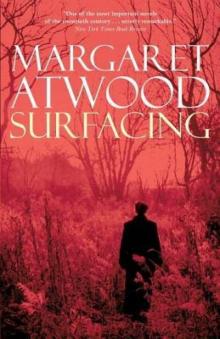 Surfacing
Surfacing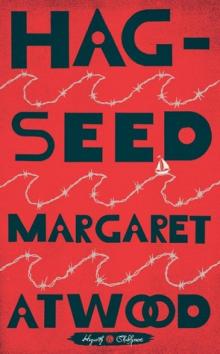 Hag-Seed
Hag-Seed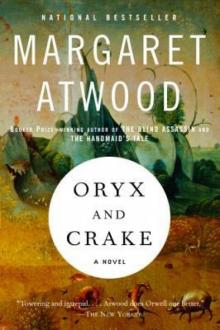 Oryx and Crake
Oryx and Crake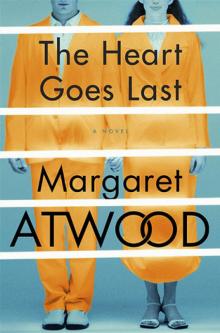 The Heart Goes Last
The Heart Goes Last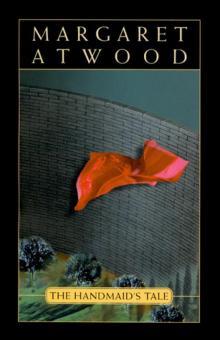 The Handmaid's Tale
The Handmaid's Tale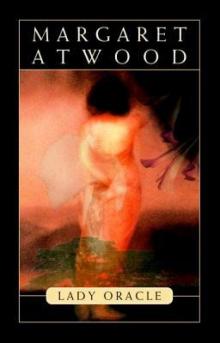 Lady Oracle
Lady Oracle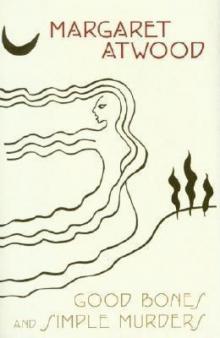 Good Bones and Simple Murders
Good Bones and Simple Murders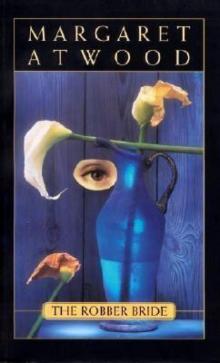 The Robber Bride
The Robber Bride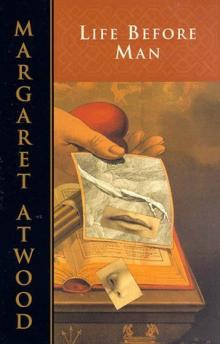 Life Before Man
Life Before Man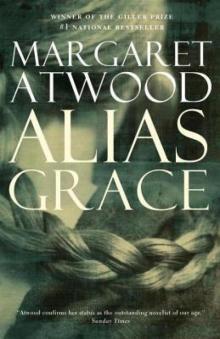 Alias Grace
Alias Grace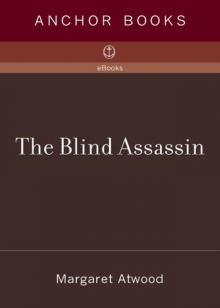 The Blind Assassin
The Blind Assassin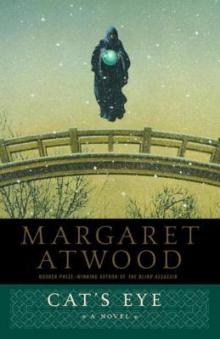 Cat's Eye
Cat's Eye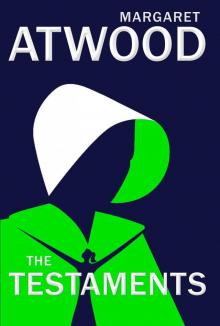 The Testaments
The Testaments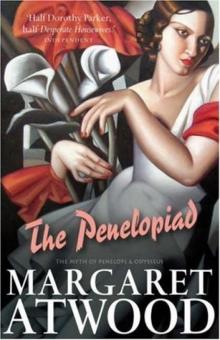 The Penelopiad
The Penelopiad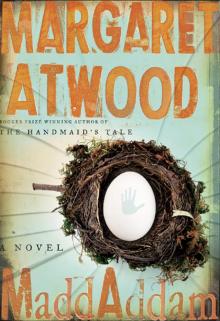 MaddAddam
MaddAddam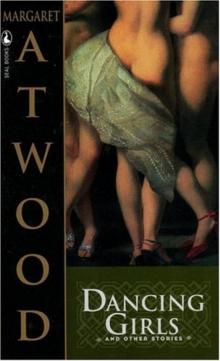 Dancing Girls & Other Stories
Dancing Girls & Other Stories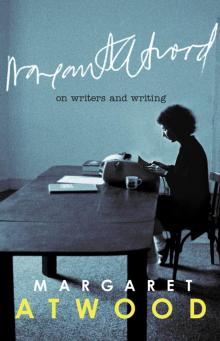 On Writers and Writing
On Writers and Writing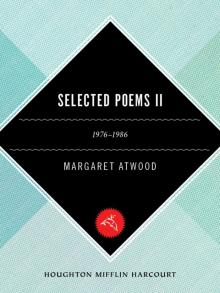 Selected Poems II (1976-1986)
Selected Poems II (1976-1986)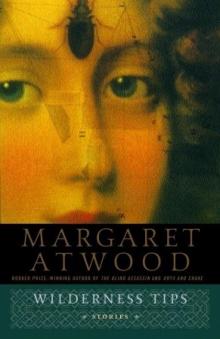 Wilderness Tips
Wilderness Tips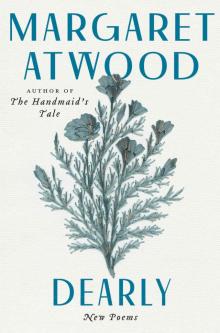 Dearly
Dearly The Tent
The Tent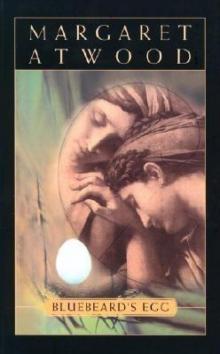 Bluebeard's Egg
Bluebeard's Egg The Edible Woman
The Edible Woman The Penelopiad: The Myth of Penelope and Odysseus
The Penelopiad: The Myth of Penelope and Odysseus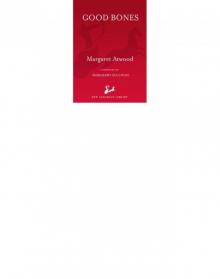 Good Bones
Good Bones I Dream of Zenia with the Bright Red Teeth
I Dream of Zenia with the Bright Red Teeth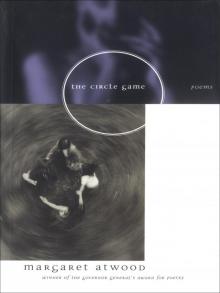 Circle Game
Circle Game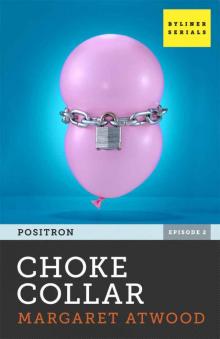 Choke Collar: Positron, Episode Two
Choke Collar: Positron, Episode Two Stone Mattress: Nine Tales
Stone Mattress: Nine Tales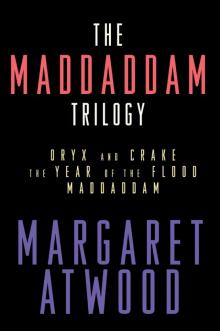 The MaddAddam Trilogy
The MaddAddam Trilogy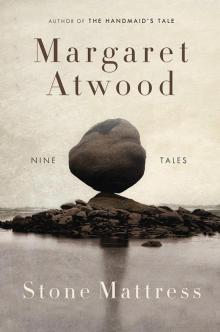 Stone Mattress
Stone Mattress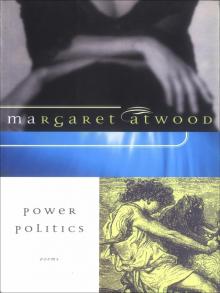 Power Politics
Power Politics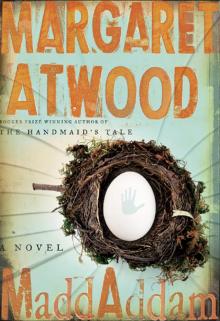 MaddAddam 03 - MaddAddam
MaddAddam 03 - MaddAddam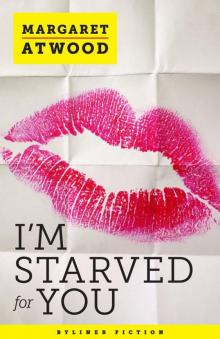 I’m Starved for You (Kindle Single)
I’m Starved for You (Kindle Single)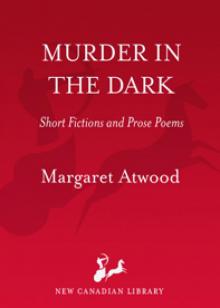 Murder in the Dark
Murder in the Dark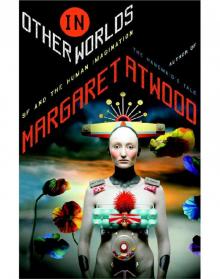 In Other Worlds
In Other Worlds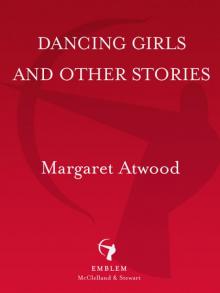 Dancing Girls
Dancing Girls Moral Disorder
Moral Disorder